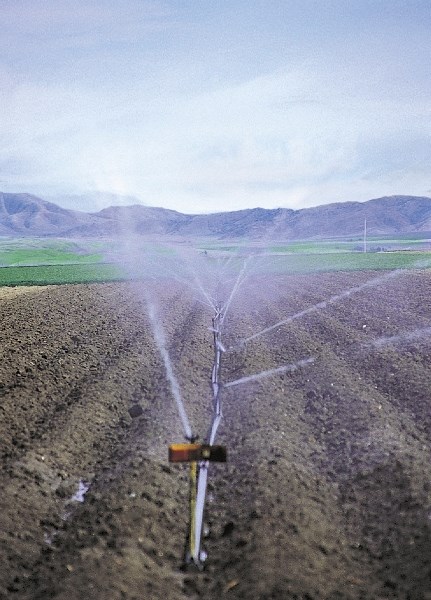The recent accumulation of snow on Sunshine Mountain along with the precipitation locally may mean communities east of Airdrie won’t see water restrictions any time soon.
The Western Irrigation District (WID), which diverts water from the Bow River and manages the delivery of raw water to irrigators and communities east of Airdrie and Calgary, stated the recent conditions has provided a much more positive outlook on their irrigation season compared to a month ago.
Last year, WID introduced water restrictions beginning in May.
“At this point, with our irrigation season preparing to just kick off, we are cautiously optimistic and have no plans to place restrictions on our water users,” said WID’s general manager, Troy Tangedal. “If we do need to place restrictions, all water users will be notified through formal communication, as well as posting updates on our website.”
Municipalities in eastern Rocky View County could be asked to reduce their water consumption by 10 per cent this summer according to Alberta’s recent largest water-sharing agreement in history.
Tangedal said WID has been supportive of the government’s efforts to introduce proactive discussions towards drought management and mitigation.
“The water sharing agreements, which are memorandum of understanding agreements, have been helpful in gaining a better understanding of how water is being managed, as it moves through Alberta and eventually to Saskatchewan,” he said.
The WID supports efforts towards emphasis on managing apportionment efficiency, investment in storage capacity, and the willingness to search for solutions “outside the box”, as valuable outcomes, Tangedal added.
Each water-sharing agreement contains specific commitments if activated, but participating municipalities are asked to reduce water consumption by between five and 10 per cent. Industries are also asked to use the minimum volume of water needed to “maintain safe, reliable operations,” and irrigation districts to use less water and allow other users to get their water first.
Four water-sharing agreements have been created to cover the sub-basins of the Red Deer River, the Bow River, the mainstem of the Oldman River, and the upper tributaries of the Oldman River.
WID diverts water from the Bow River at Harvie Passage in Calgary as of May 1 into the provincially owned Western Headworks Canal. The Headworks Canal flows through to Chestermere where the water is split in that reservoir to the south and north, supplying all water users in WID’s district.
Five triggers will activate the government’s water sharing agreement, including snowpack and moisture data; final decisions by irrigation districts on their water allocations; reservoir levels, river flows and expected seven-day precipitation forecasts; water demand; and local challenges or issues.
The provincial media release added participating industries will use only the minimum volume of water practical to maintain safe, reliable operations.
Among the largest and oldest water licensees in Alberta, WID is one of 38 major licence holders to agree to voluntarily reduce the water they use if severe drought conditions develop this spring or summer.
Which isn’t a major concern at this time, according to Tangedal.



